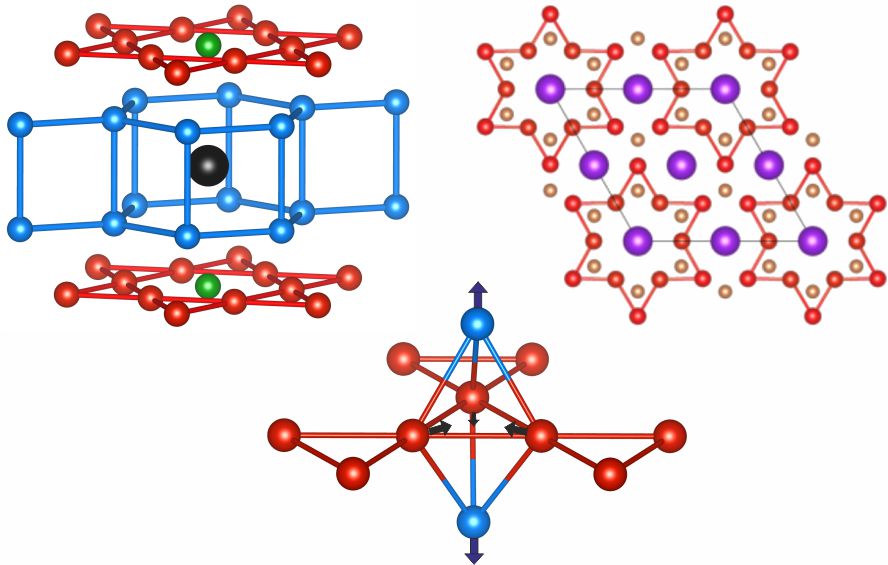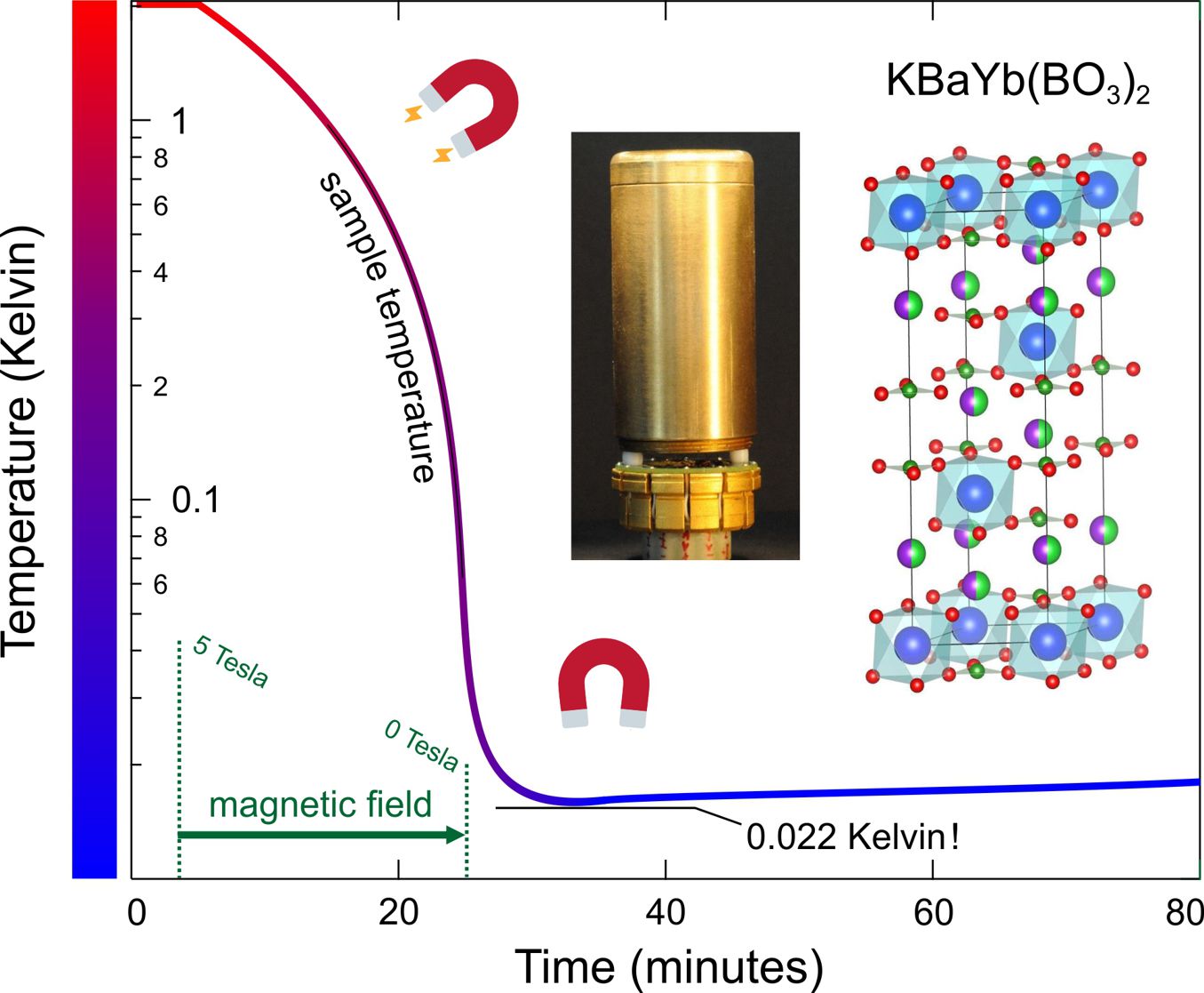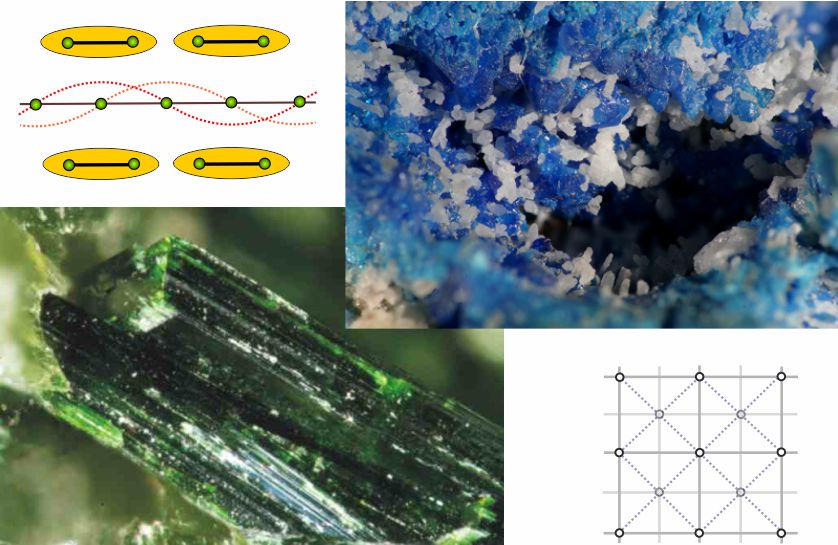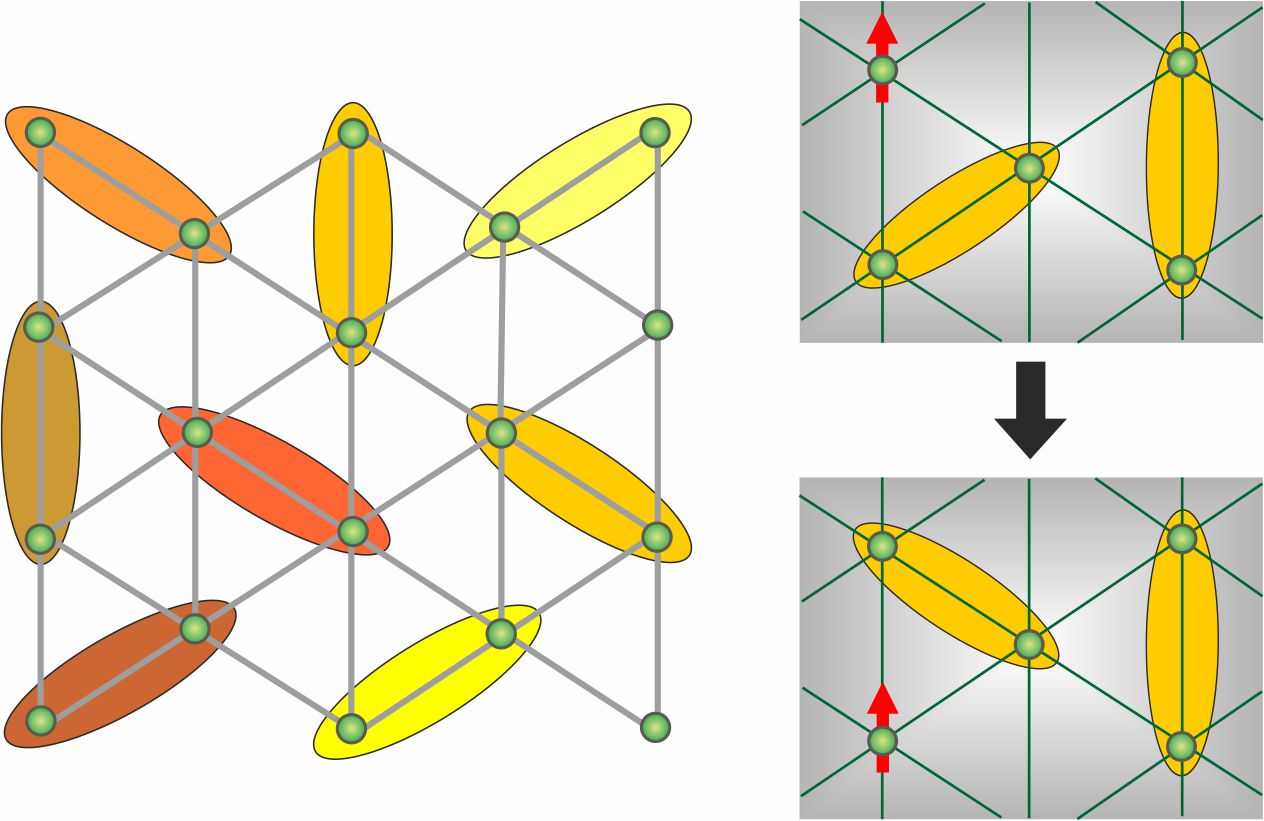Quantum spin liquid
Spins resemble atoms: they can be randomly oriented ("gas phase") or magnetically ordered ("crystals"). The intermediate liquid-like
state is of significant interest, especially when spins are quantum in nature and become entangled. With promising implications
for fault-free quantum computing, the long-range entanglement of quantum spin liquids becomes the central property that needs
to be confirmed experimentally in model systems via so-called fractionalized excitations and eventually realized in a variety of
quantum materials. We study different aspects of frustrated magnets – candidate spin-liquid materials, establish their
microscopic magnetic models, and explore structural imperfections that may have drastic repercussions for the spin-liquid behavior
and underlying entanglement.

(Superconducting) kagome metals
The concept of band topology breathed the new life into physics of metals, especially those metals that feature a strong coupling
between spin and charge with potential implications for spintronics. Kagome geometry – the lattice of corner-sharing triangles
– is particularly well suited to create linear band crossings and Dirac or Weyl points, the Holy Grail of topological bands.
However, kagome is much more than that: flat bands and robust ferromagnetism, van Hove singularities and charge-density waves... a
rich physics that depends sensitively on structural parameters tuned by chemistry or applied pressure. We seek to understand this
relation and pay special attention to the stability of magnetism vs. superconducting instabilities in kagome metals.

Magnetic cooling
Reaching low temperatures requires liquefied gas, typically liquid helium that has been (and still is) the cornerstone of cryogenic
technology. Unfortunately, helium prices increase faster than those of oil and natural gas... in fact, much faster, and
jeopardize the development of quantum technology that critically relies on ultra-low temperatures and powerful cooling. This problem
triggers more and more interest in the hitherto dormant technique of magnetic cooling where entropy controlled by the magnetic field
facilitates change in temperature, resulting in adiabatic refrigeration. We seek to identify suitable materials,
especially among frustrated magnets and spin-liquid candidates, as the absence of magnetic order, an intrinsic property of these
systems, appears to be advantageous for cooling applications.

Magnetism of minerals
Colourful, shiny, and undeniably beautiful, minerals are an endless source of inspiration for all of the natural sciences,
including solid-state physics where structural and chemical diversity of minerals plays a special role. We study the unusual magnetic
behavior of natural minerals, their synthetic analogs, and new inorganic compounds inspired by mineral structures. Experimental
magnetic characterization is supplied with the evaluation of individual magnetic couplings and gives us a rare chance to establish
the position of minerals and mineralogically-inspired compounds among inorganic magnetic compounds, with the hope of finding new spin-liquid
candidates along with other manifestations of unconventional magnetism.




